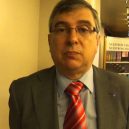-
- To train students both for the management of tourism organizations, as well as for the design of new products / tourist packages or for the planning of tourism development projects, with their subsequent application and implementation.
-
- Favor the direct contact with the tourism sector.
-
- Provide an integrative view of the different subsystems that make up the organization / company system in the tourism sector.
-
- To know and understand the evolution of tourism.


 Español
Español Galego
Galego































